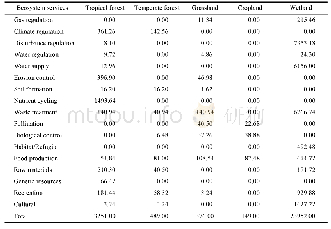《Table 2 Model performance rating based on Moriasi et al. (2007) and Rahman et al. (2014)》
 提示:宽带有限、当前游客访问压缩模式
提示:宽带有限、当前游客访问压缩模式
本系列图表出处文件名:随高清版一同展现
《"Simulating hydrological responses to climate change using dynamic and statistical downscaling methods: a case study in the Kaidu River Basin, Xinjiang, China"》
Hydrological modeling provides critical information for the assessment of water resources(Sivapalan et al.,2003).The use of unreasonable parameter sets might modify model responses in the future scenarios.Our SWAT model was calibrated and validated via the daily observed flow data at the Dashankou hydrological station.Sequential Uncertainty Fitting(SUFI-2)was used for model parameter sensitivity analysis.Twenty-seven hydrological parameters were evaluated,but only ten parameters were selected to avoid the problems related to over-parameterization.The three most sensitive parameters were the base flow alpha factor,the precipitation lapse rate,and the temperature lapse rate.This means that the base flow,elevation band of precipitation and temperature had the greatest impact on stream flow.The parameters were then manually calibrated.The base flow alpha factor was adjusted to 0.78 from the default value of 1.00.The temperature and precipitation lapse rates were adjusted to–1.45°C/km and 137 mm/km,respectively.Figure 3 shows the performance of SWAT model during calibration(1986–1995)and validation(1996–2005)periods,and a summary of the results is shown in Table 2.The results of NS,PBIAS,and R2 indicate that the model exhibits a good performance during calibration and validation periods.
| 图表编号 | XD0020365000 严禁用于非法目的 |
|---|---|
| 绘制时间 | 2018.12.01 |
| 作者 | BA Wulong、DU Pengfei、LIU Tie、BAO Anming、LUO Min、Mujtaba HASSAN、QIN Chengxin |
| 绘制单位 | State Key Laboratory of Environmental Simulation and Pollution Control, School of Environment, Tsinghua University、State Key Laboratory of Desert and Oasis Ecology, Xinjiang Institute of Ecology and Geography, Chinese Academy of Sciences、State Key Laborat |
| 更多格式 | 高清、无水印(增值服务) |
查看“Table 2 Model performance rating based on Moriasi et al. (2007) and Rahman et al. (2014)”的人还看了
-

- Table 5 Input parameters for alternator design based on the performance evaluation of horizontal axis wind turbine torqu
-

- 表3 特征波长下茶园土壤酸碱状况的Bayes判别模型识别结果Table 3 The predicted results of Bayes discrimination model based on characteristic wavele
-

- 表2 基于叶绿素荧光光谱特征参数的叶片净光合速率回归模型Table 2 Regression model of leaf net photosynthetic rate based on characteristic parameters





